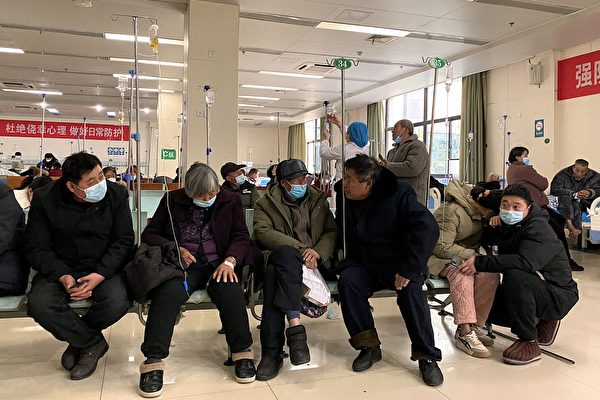Recently, a netizen from Xinxiang, Henan Province, visited a local hospital and found out that the daily outpatient medical insurance for residents is limited to 50 yuan (RMB, same below). This incident has sparked public attention, with some netizens expressing concerns about the lack of funds in the medical insurance system.
The netizen shared a notice from the hospital stating, “According to the municipal bureau’s notice, starting today, the daily limit for residents’ medical insurance is 50 yuan, and for employees it is 150 yuan.” The notice was signed by the Xinxiang City Medical Insurance Bureau and dated June 13, 2025.
On November 10, staff from the Xinxiang City Medical Insurance Bureau responded to the public’s concerns by stating that adjustments were made for both residents and employees based on the overall fund operation situation in Xinxiang City. They emphasized that without these limits in place, there would be a situation of insufficient funds by December.
According to a report by “Huashang News” in June, the Xinxiang City Medical Insurance Bureau issued a notice clarifying the daily payment limits for outpatient services for employees and urban and rural residents. The notice aimed to maintain the security of the medical insurance fund by setting a daily payment limit of 50 yuan for urban and rural residents, 150 yuan for employed workers, and 200 yuan for retired workers, while keeping other benefit policies unchanged.
When contacted by “Huashang News” again on the same day, a staff member of the Xinxiang City Medical Insurance Bureau denied the previous claim of a lack of funds, stating that the adjustment was made to prevent healthcare and pharmacies from committing fraud.
The staff member also mentioned that information regarding medical insurance funds is sensitive and cannot be disclosed.
The conflicting responses from the local medical insurance bureau have left the reasons behind the implementation of the payment limits unclear.
Reported by “Beijing News,” even for minor illnesses like the common cold, patients typically require basic tests like blood routine analysis during consultations. The cost of consultation and a few boxes of medicine can easily exceed a hundred yuan. This daily low fee standard is evidently inadequate to meet the medication and treatment needs of some patients. Particularly for those with chronic conditions like diabetes and hypertension, who require multiple medications for long-term management, the daily medication expenses may exceed the limit.
News about the payment limits in Xinxiang’s medical insurance system has sparked discussions online. Some netizens from Henan expressed their discontent, with one saying, “Our county-level hospitals do not even allow this, Xinxiang is better off.” Another netizen questioned the economic ranking of Xinxiang in Henan, given the situation.
In another comment, a netizen mentioned restrictions on medical insurance in Hubei, Yunnan, and Shenzhen, highlighting the concerns over the use of medical insurance funds and the limitations imposed.
An earlier report by Dajiyuan pointed out that the Zero-COVID policy during the pandemic has drained the coordination funds in the medical insurance system, leading authorities to target individual medical insurance accounts across the country. By 2022, the accumulated balance in individual medical insurance accounts had reached 1.3713 trillion yuan. With dwindling medical insurance funds, hospitals are facing increasing pressure, prompting them to restrict medical insurance reimbursements.
Mr. Wen from Hunan expressed his concerns to Dajiyuan, stating, “While I was in the hospital, a nurse mentioned a new medical insurance policy which aims to further tighten the reimbursement limits and scope, indicating that the funds in the medical insurance pool are running low, and there are concerns that local finances might be using medical insurance funds to repay debts.”
As the situation unfolds, the impact of these changes on the healthcare system and the access to medical services for the general public remains a topic of ongoing debate and scrutiny.

